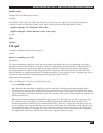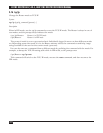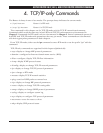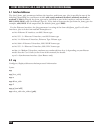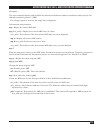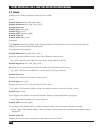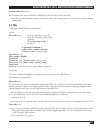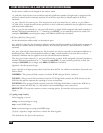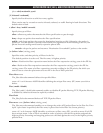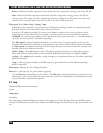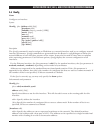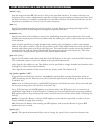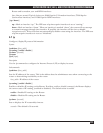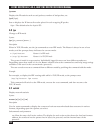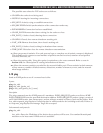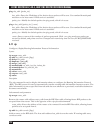
ASYNC ROUTER AR-P, AR-5, AND SYNC ROUTER REFERENCE MANUAL
iface—eth0, modem0-4, sync0
[-f {inbound | outbound}]
Specify the flow direction to which an entry applies.
Filter entries may be created to restrict inbound, outbound, or traffic flowing in both directions. The
default value is both.
-t {allow | deny | nodial | unreach}
Specify the type of filter.
allow—allows any packet that matches the filter specification to pass through.
deny—drops any packet that matches the filter specification.
nodial—only drops packets that cause the destination interface to dial. Otherwise, the packet is
passed on. Use this option to prevent hosts outside the organization from initiating a call on your
phone line and causing unnecessarily expensive phone bills.
unreach—drops the packet and returns a “Destination Unreachable” packet to the sender.
[-o {before | after} existing_name]
Specifies order, and thus priority, of filters in the list.
The default position is at the end. The first entry is highest priority.
before—Position the filter expression name before the filter expression existing_name in the FE list.
after—Position the filter expression name after the filter expression existing_name in the FE list.
existing_name—The name of a filter expression currently residing in the FE priority list which you
want to use to orient the placement of a new FE in the list of filter priorities.
filter delete name
The filter delete subcommand deletes the specified filter.
name—A 1- to 6-character ASCII identifier defining the unique filter entry (FE) name you wish to
delete.
filter {enable | disable}
The filter {enable | disable} subcommand enables or disables IP packet filtering. TCP/IP packet filtering
is disabled by default and must be explicitly enabled.
filter flush
The filter flush subcommand deletes all TCP/IP packet filters.
filter move name [{before | after} existing_name]
The filter move subcommand enables you to change the order of IP packet filters in the filter list. If no
before | after clause is specified, the filter entry is placed last in the filter list (lowest priority).
name—A 1 to 6 character ASCII identifier to reference a filter entry (FE) you wish to move. Each FE
has a unique name. A list of FEs is recorded in order of priority, with the first position assigned the
highest priority. Incoming and outgoing packets are checked against the entry in the highest priority
position first.
219



